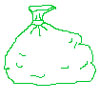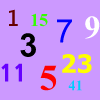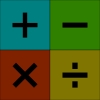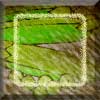Skip over navigation
Article by Alison Borthwick
Introduction
This feature has two purposes. Firstly, it could be used by many of you who are looking to pause and reflect on the mathematical developments children have made this year. The second purpose is to support those teachers who may be planning some transition tasks to work on with their new class.
Whatever your purpose, this article aims to focus on tasks where we can observe children's mathematical strategies, and consider how they approach problems, work together and develop their mathematical thinking skills. Whether you are reflecting on children's learning to date, or thinking about transition, this is an opportunity to provide learners with rich tasks and observe how they engage with and understand the mathematics. It is also an opportunity to notice how they respond to the tasks. Are they confident? Do they enjoy solving them? Do they exhibit positive attitudes towards mathematics?
Curriculum continuity
For those of you considering transition activities, much of the research (Evangelou et al., 2008) suggests that curriculum continuity is key to successful transition. Sometimes children may worry about whether the work will be any different or even harder when they move class, teacher or school. Using familiar activities, such as NRICH tasks, can help to smooth this transition, even if children are staying in the same class with the same teacher. It is also useful, given the chance, for teachers to talk to each other and share information both before and after the transition. This can help to continue independent strategies that children currently have, such as where are the resources kept and should they use them, for example.
As well as observing how learners approach the tasks, notice how they go about recording their mathematics. Do the children know what to record and the different ways they could communicate their thinking and working? Try not to lead the children too much, even though it can be tempting to scaffold. A new class of children may be looking to you to try and guess what it is you want! Instead, ask them to decide and then celebrate their different approaches. As we have commented elsewhere (Using NRICH Solutions as a Resource), children's solutions can sometimes be under-valued. As a teacher, using children's solutions can give you valuable insight into how learners respond to different tasks. Are they confident? Do they show resilience? Are they inclined to try different approaches?
If you are continuing with the same group of children this could give you an opportunity to reflect on the mathematical developments they have made over the year and identify some priorities for next year. With a new group of children you can consider what understanding has been demonstrated and possible areas for future development. It may also be that your new class is made up of children who have not all worked together before. Using children's solutions can allow different approaches to be explored and appreciated. This also helps to emphasise that there are many different ways to work on a task and record thinking. If you are staying with your current class look out for how their recording has developed and progressed over the year.
You might find our article on Mathematical Recording helpful which proposes three different contexts in which recording could take place.
Teaching and learning approaches
Within this feature a key teaching approach is listening. Whether you are considering the developments children have made mathematically, or running a transition activity, you want the children to take the centre stage and lead the learning. Try not to point out mistakes, make assumptions about learning by asking questions too quickly or be the person with the most knowledge. Instead, listen, pause and then listen again!
Many of the NRICH tasks available have been designed with group work in mind so try to support interactions between the children for these tasks. Often when we are reflecting on what children have learnt, the temptation is to give them work to complete individually. However, peer interactions are a powerful source of learning and might tell you a lot about what they can and can't do. Equally using group work on a transition day is useful because it can help to settle the children and show them that you are more interested in how they work rather then the answers they produce.
Building confidence
Building confidence is an important aspect of learning, whatever the purpose. This, and
other aspects of learning are equally important to consider. As the recent report from the JMC (2017) highlights, this could include:
• Building confidence;
• Developing resilience;
• Creating a classroom environment which encourages children to offer conjectures and take risks.
Here at NRICH we aim to expose children to rich tasks which develop deep mathematical thinking alongside problem-solving skills, which draw on aspects such as confidence, resilience and risk taking. Building a positive mathematical classroom culture is essential for learners to build confidence and resilience. We would like to think that NRICH tasks enable children to 'have a go' and allow these other important qualities to develop and grow.
It is also useful to consider if the transition has been successful. For many teachers it is about ensuring that children continue to make progress. Our curriculum mapping documents are a useful tool to use here. However, children often use other measures, such as their confidence was maintained, they were happy or felt their work was valued.
Live solutions
Curriculum continuity is highlighted as one of the features that helps children to move to another teacher, class or even school (Evangelou et al., 2008). The NRICH tasks that are chosen to accompany this feature are also live, meaning that children can submit solutions to NRICH and might return in September to find their solutions have been published on the website! Even if the solutions are not published on the NRICH website why not make a display of them in your school? Children arriving in September will be presented with their work already on show and you can always use their solutions as a teaching resource in those first few lessons of the new academic year.
Problems, investigations and games
Whether you are planning a transition activity or reflecting on learning, the tasks selected in this feature offer the opportunity to observe the children engaging in mathematical problem solving, discussion, recording and reasoning.
The activities contain a mixture of problems, games and investigations. Many of the problems can be completed in a short amount of time, compared to some of the investigations which are designed to take longer should you have more time. However, you could extend some of the problems and investigations to use over more than one lesson. We have also included some games because we know that children enjoy playing games. However, we also know that mathematical games (as opposed to activities) need at least two players or more, which gives us an opportunity to observe how children co-operate together (even if they are trying to win!). The games we have selected rely on strategy and reasoning, rather than chance to win. They also allow children to play at different levels.
Problems
For lower primary, Count the Crayons, Heads and Feet and Stone Age Counting are problems which children could complete in a short amount of time.
 Count the crayons is a lovely visual problem where children estimate the number of pencils or pens in the pictures. Look at the different methods children employ to reach an answer. Are they using systematic ways to solve the
problem?
Count the crayons is a lovely visual problem where children estimate the number of pencils or pens in the pictures. Look at the different methods children employ to reach an answer. Are they using systematic ways to solve the
problem?
Another problem which uses systematic recording is Heads and Feet. Set in the context of a farm with hens and sheep, there are a total of 8 heads and 22 feet, but how many hens are there?

Stone Age Counting draws on children's reasoning skills to interpret and offer suggestions to what these early drawings could represent.
For upper primary, Prompt Cards, Maze 100 and Money Bags all use mathematical reasoning. Reasoning is fundamental to knowing and doing mathematics and these three problems draw on children's reasoning skills to help solve the problems.
Prompt Cards offers two activities, one based on numerical reasoning and the other on geometrical reasoning.
 In Maze 100 the challenge is to find a route through the grid to reach the end total of 100. As children work through their solutions they may need to tweak their approach, and reason whether they need to include more numbers or
less.
In Maze 100 the challenge is to find a route through the grid to reach the end total of 100. As children work through their solutions they may need to tweak their approach, and reason whether they need to include more numbers or
less.
 In the problem Money Bags Ram has divided 15 pennies among four bags. The children need to work out how many pennies Ram put in each bag if he could pay any sum of money from 1p to 15p.
In the problem Money Bags Ram has divided 15 pennies among four bags. The children need to work out how many pennies Ram put in each bag if he could pay any sum of money from 1p to 15p.
Investigations
How Odd and What Could It Be? are two investigations suitable for lower primary.
 How Odd gives children the opportunity to explore odd numbers while What Could It Be? provides an opportunity for children to practise their addition skills, but through an open ended problem. Both investigations encourage
the children to record their results so that they could begin to notice patterns and make predictions.
How Odd gives children the opportunity to explore odd numbers while What Could It Be? provides an opportunity for children to practise their addition skills, but through an open ended problem. Both investigations encourage
the children to record their results so that they could begin to notice patterns and make predictions.
 The investigations Highest and Lowest and Take Three Numbers provide good opportunities for upper primary children to explore knowledge and skills they already have. Highest and Lowest requires
children to put operation signs between digits to make either the highest or lowest possible number. The task suggests using the digits 3, 4, 5, 6 but you could select other digits too. Take Three Numbers asks what happens when you add three numbers together? Will the answer be odd or even?
The investigations Highest and Lowest and Take Three Numbers provide good opportunities for upper primary children to explore knowledge and skills they already have. Highest and Lowest requires
children to put operation signs between digits to make either the highest or lowest possible number. The task suggests using the digits 3, 4, 5, 6 but you could select other digits too. Take Three Numbers asks what happens when you add three numbers together? Will the answer be odd or even?
Games
You may also like to use a game with the children. The games selected on the NRICH site support children's logical thinking skills. For lower primary why not try Pass the Peas, Please which helps children to practise their addition
and subtraction skills with the aid of a game board and some dried peas!
NRICH site support children's logical thinking skills. For lower primary why not try Pass the Peas, Please which helps children to practise their addition
and subtraction skills with the aid of a game board and some dried peas!
For upper primary try Four Go. Players choose two numbers from the grid, decide whether to multiply or divide them and then mark their answer on a number line. The winner is the first person to get four in a row.
Additional materials
Don't forget there are also secondary tasks available if you want even more of a challenge for your children. The secondary curriculum mapping documents link activities to curriculum content, giving you plenty to choose from, or you might want to delve into the secondary summer term feature on Play, Persevere, Succeed and choose from tasks such as Multiples Sudoku.
And finally ”¦
The activities included in this feature have focused on children's understanding of number and how they approach the tasks. However, mathematics isn't just about number! So, we have also chosen some tasks which draw on other areas of mathematics too. Have a look in the related section to find activities using tangrams, squares and cubes.
We hope you find the tasks we have chosen helpful, both in this article and the related list. Remember many more tasks can be found either on the primary curriculum mapping documents or on the NRICH website.
Further reading
If this feature has got you thinking about the start of next term then Cherri Moseley's article on Welcoming Your New Class offers great ideas and guidance on those first few days of term.
References
Evangelou, M., Taggart, B., Sylva, K., Melhuish, E., Sammons, P and Siraj-Blatchford, I. (2008) What Makes a Successful Transition from Primary to Secondary School? Department for Children, Schools and Families Research report No. DCSF-RR019. London: DCSF
Rice, F., Frederickson, N., Shelton, K., McManus, C., Riglin, L. and Ng-Knight, T. (2015) Identifying Factors That Predict Successful and Difficult Transitions to Secondary School. www.ucl.ac.uk/stars
Here is a PDF version of this article.
Or search by topic
Number and algebra
Geometry and measure
Probability and statistics
Working mathematically
Advanced mathematics
For younger learners
Age 5 to 11
Published 2017 Revised 2018
NRICH at Every Stage
Introduction
This feature has two purposes. Firstly, it could be used by many of you who are looking to pause and reflect on the mathematical developments children have made this year. The second purpose is to support those teachers who may be planning some transition tasks to work on with their new class.
Whatever your purpose, this article aims to focus on tasks where we can observe children's mathematical strategies, and consider how they approach problems, work together and develop their mathematical thinking skills. Whether you are reflecting on children's learning to date, or thinking about transition, this is an opportunity to provide learners with rich tasks and observe how they engage with and understand the mathematics. It is also an opportunity to notice how they respond to the tasks. Are they confident? Do they enjoy solving them? Do they exhibit positive attitudes towards mathematics?
Curriculum continuity
For those of you considering transition activities, much of the research (Evangelou et al., 2008) suggests that curriculum continuity is key to successful transition. Sometimes children may worry about whether the work will be any different or even harder when they move class, teacher or school. Using familiar activities, such as NRICH tasks, can help to smooth this transition, even if children are staying in the same class with the same teacher. It is also useful, given the chance, for teachers to talk to each other and share information both before and after the transition. This can help to continue independent strategies that children currently have, such as where are the resources kept and should they use them, for example.
As well as observing how learners approach the tasks, notice how they go about recording their mathematics. Do the children know what to record and the different ways they could communicate their thinking and working? Try not to lead the children too much, even though it can be tempting to scaffold. A new class of children may be looking to you to try and guess what it is you want! Instead, ask them to decide and then celebrate their different approaches. As we have commented elsewhere (Using NRICH Solutions as a Resource), children's solutions can sometimes be under-valued. As a teacher, using children's solutions can give you valuable insight into how learners respond to different tasks. Are they confident? Do they show resilience? Are they inclined to try different approaches?
If you are continuing with the same group of children this could give you an opportunity to reflect on the mathematical developments they have made over the year and identify some priorities for next year. With a new group of children you can consider what understanding has been demonstrated and possible areas for future development. It may also be that your new class is made up of children who have not all worked together before. Using children's solutions can allow different approaches to be explored and appreciated. This also helps to emphasise that there are many different ways to work on a task and record thinking. If you are staying with your current class look out for how their recording has developed and progressed over the year.
You might find our article on Mathematical Recording helpful which proposes three different contexts in which recording could take place.
Teaching and learning approaches
Within this feature a key teaching approach is listening. Whether you are considering the developments children have made mathematically, or running a transition activity, you want the children to take the centre stage and lead the learning. Try not to point out mistakes, make assumptions about learning by asking questions too quickly or be the person with the most knowledge. Instead, listen, pause and then listen again!
Many of the NRICH tasks available have been designed with group work in mind so try to support interactions between the children for these tasks. Often when we are reflecting on what children have learnt, the temptation is to give them work to complete individually. However, peer interactions are a powerful source of learning and might tell you a lot about what they can and can't do. Equally using group work on a transition day is useful because it can help to settle the children and show them that you are more interested in how they work rather then the answers they produce.
Building confidence
Building confidence is an important aspect of learning, whatever the purpose. This, and
other aspects of learning are equally important to consider. As the recent report from the JMC (2017) highlights, this could include:
• Building confidence;
• Developing resilience;
• Creating a classroom environment which encourages children to offer conjectures and take risks.
Here at NRICH we aim to expose children to rich tasks which develop deep mathematical thinking alongside problem-solving skills, which draw on aspects such as confidence, resilience and risk taking. Building a positive mathematical classroom culture is essential for learners to build confidence and resilience. We would like to think that NRICH tasks enable children to 'have a go' and allow these other important qualities to develop and grow.
It is also useful to consider if the transition has been successful. For many teachers it is about ensuring that children continue to make progress. Our curriculum mapping documents are a useful tool to use here. However, children often use other measures, such as their confidence was maintained, they were happy or felt their work was valued.
Live solutions
Curriculum continuity is highlighted as one of the features that helps children to move to another teacher, class or even school (Evangelou et al., 2008). The NRICH tasks that are chosen to accompany this feature are also live, meaning that children can submit solutions to NRICH and might return in September to find their solutions have been published on the website! Even if the solutions are not published on the NRICH website why not make a display of them in your school? Children arriving in September will be presented with their work already on show and you can always use their solutions as a teaching resource in those first few lessons of the new academic year.
Problems, investigations and games
Whether you are planning a transition activity or reflecting on learning, the tasks selected in this feature offer the opportunity to observe the children engaging in mathematical problem solving, discussion, recording and reasoning.
The activities contain a mixture of problems, games and investigations. Many of the problems can be completed in a short amount of time, compared to some of the investigations which are designed to take longer should you have more time. However, you could extend some of the problems and investigations to use over more than one lesson. We have also included some games because we know that children enjoy playing games. However, we also know that mathematical games (as opposed to activities) need at least two players or more, which gives us an opportunity to observe how children co-operate together (even if they are trying to win!). The games we have selected rely on strategy and reasoning, rather than chance to win. They also allow children to play at different levels.
Problems
For lower primary, Count the Crayons, Heads and Feet and Stone Age Counting are problems which children could complete in a short amount of time.
Another problem which uses systematic recording is Heads and Feet. Set in the context of a farm with hens and sheep, there are a total of 8 heads and 22 feet, but how many hens are there?
Stone Age Counting draws on children's reasoning skills to interpret and offer suggestions to what these early drawings could represent.
For upper primary, Prompt Cards, Maze 100 and Money Bags all use mathematical reasoning. Reasoning is fundamental to knowing and doing mathematics and these three problems draw on children's reasoning skills to help solve the problems.
Prompt Cards offers two activities, one based on numerical reasoning and the other on geometrical reasoning.
Investigations
How Odd and What Could It Be? are two investigations suitable for lower primary.
Games
You may also like to use a game with the children. The games selected on the
For upper primary try Four Go. Players choose two numbers from the grid, decide whether to multiply or divide them and then mark their answer on a number line. The winner is the first person to get four in a row.
Additional materials
Don't forget there are also secondary tasks available if you want even more of a challenge for your children. The secondary curriculum mapping documents link activities to curriculum content, giving you plenty to choose from, or you might want to delve into the secondary summer term feature on Play, Persevere, Succeed and choose from tasks such as Multiples Sudoku.
And finally ”¦
The activities included in this feature have focused on children's understanding of number and how they approach the tasks. However, mathematics isn't just about number! So, we have also chosen some tasks which draw on other areas of mathematics too. Have a look in the related section to find activities using tangrams, squares and cubes.
We hope you find the tasks we have chosen helpful, both in this article and the related list. Remember many more tasks can be found either on the primary curriculum mapping documents or on the NRICH website.
Further reading
If this feature has got you thinking about the start of next term then Cherri Moseley's article on Welcoming Your New Class offers great ideas and guidance on those first few days of term.
References
Evangelou, M., Taggart, B., Sylva, K., Melhuish, E., Sammons, P and Siraj-Blatchford, I. (2008) What Makes a Successful Transition from Primary to Secondary School? Department for Children, Schools and Families Research report No. DCSF-RR019. London: DCSF
Rice, F., Frederickson, N., Shelton, K., McManus, C., Riglin, L. and Ng-Knight, T. (2015) Identifying Factors That Predict Successful and Difficult Transitions to Secondary School. www.ucl.ac.uk/stars
Here is a PDF version of this article.

